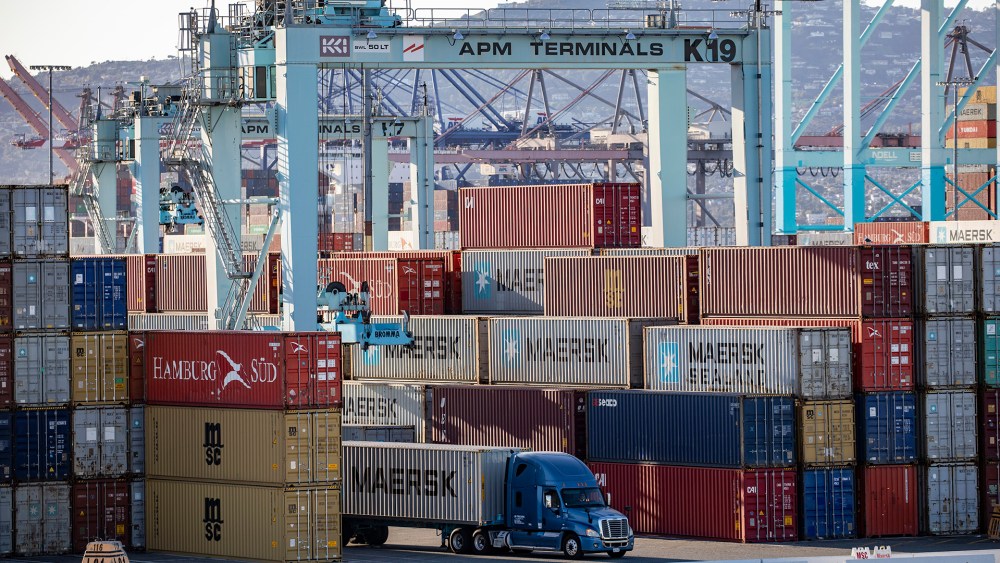Cargo container traffic at the nation’s ports is showing that consumers are continuing their love affair with spending.
During the first quarter of this year, major U.S. and Canadian ports saw cargo container imports grow 17.4 percent over the same period last year.
That robust spending is predicted to continue. “We are projecting strong growth for this year,” said Daniel Hackett, a partner with Hackett Associates, the U.S. company that prepares the quarterly “Global Port Tracker” report for the National Retail Federation. “We will see growth approaching the 10 percent mark this year for the U.S. and Canadian ports that we cover.”
While economists note that GDP growth has slowed since the beginning of this year, consumers continue to open their wallets. Wages are still increasing faster than inflation, which stands at 3.4 percent over last year. But shoppers now want value. “Consumers have begun more recently to look for deals and are being a little smarter about how they spend. They’ve really been shopping for the winter holiday season a little earlier than usual,” said Hackett, who was the guest speaker at Monday’s Port of Los Angeles monthly press conference discussing shipping statistics.
The Port of Los Angeles has had a very good year, capped in April by a 21 percent increase in cargo container imports coming through the largest port in the U.S. The shipping gateway saw 417,000 20-foot containers arrive at its docks out of a total 770,020 containers going in and out of the port. “That made April our third busiest April on record,” said Gene Seroka, the port’s executive director.
During the first four months of this year, he noted, dockworkers handled 3.2 million 20-foot containers of imports and exports, which is a 25 percent gain over last year.
This is a major turnaround from last year when the Port of Los Angeles and other West Coast ports were dealing with labor uncertainty. Contract talks between the International Longshore and Warehouse Union, and the Pacific Maritime Association, comprising the terminal operators who employ the workers, dragged on for 13 months before an agreement was reached in June for a new six-year labor contract.
During that time, many shippers diverted their cargo from the West Coast to East Coast and Gulf state ports to avoid possible labor disruptions. As a result, the Port of Los Angeles last year only handled 8.63 million 20-foot containers, a nearly 13 percent drop from 2022. This was a big contrast from 2021, when the port saw 10.67 million 20-foot containers pass through the docks because of pent-up consumer demand from 2020 when many stores were closed due to the pandemic. At that time, consumers were purchasing big ticket items such as furniture, home goods and electric appliances from Asia.
With today’s high interest rates dampening home purchases, people are spending less on household items and buying more clothing, sports goods and less pricey items. “Sales of sporting goods, hobby items, musical instruments and purchases at bookstores are up by 29 percent in dollar terms in the first quarter of 2024 versus the first quarter in 2019,” Hackett said.
With robust spending, importers recently have been playing a geopolitical/economic guessing game to ship goods around the world. Recently, months of Iran-backed Houthi rebel attacks in the Red Sea have forced some shippers to take a longer and more expensive route around the southern tip of Africa. A more than one-year drought in Panama has lowered water levels in the Panama Canal, making it slower to get ships through the canal. Some 40 percent of all U.S. container traffic passes through the canal, often destined for East Coast ports. Vessel traffic in the canal is down 36 percent.
And 45,000 longshore workers at East Coast and Gulf Coast ports have a labor contract expiring with the U.S. Maritime Alliance at the end of September. “Some shippers are certainly bringing cargo in ahead of that date,” Hackett observed.
The Port of Los Angeles and other West Coast ports have seen about 2 percent to 5 percent of East Coast destined volume end up at their docks. But there is optimism a contract will be worked out by the deadline. “I must say, the East Coast dockworkers and the International Longshoremen’s Association have not gone on a strike since 1977,” Seroka of the Port of Los Angeles said. “I’m confident they’ll reach conclusions ahead of the contract’s expiration date in September.”



